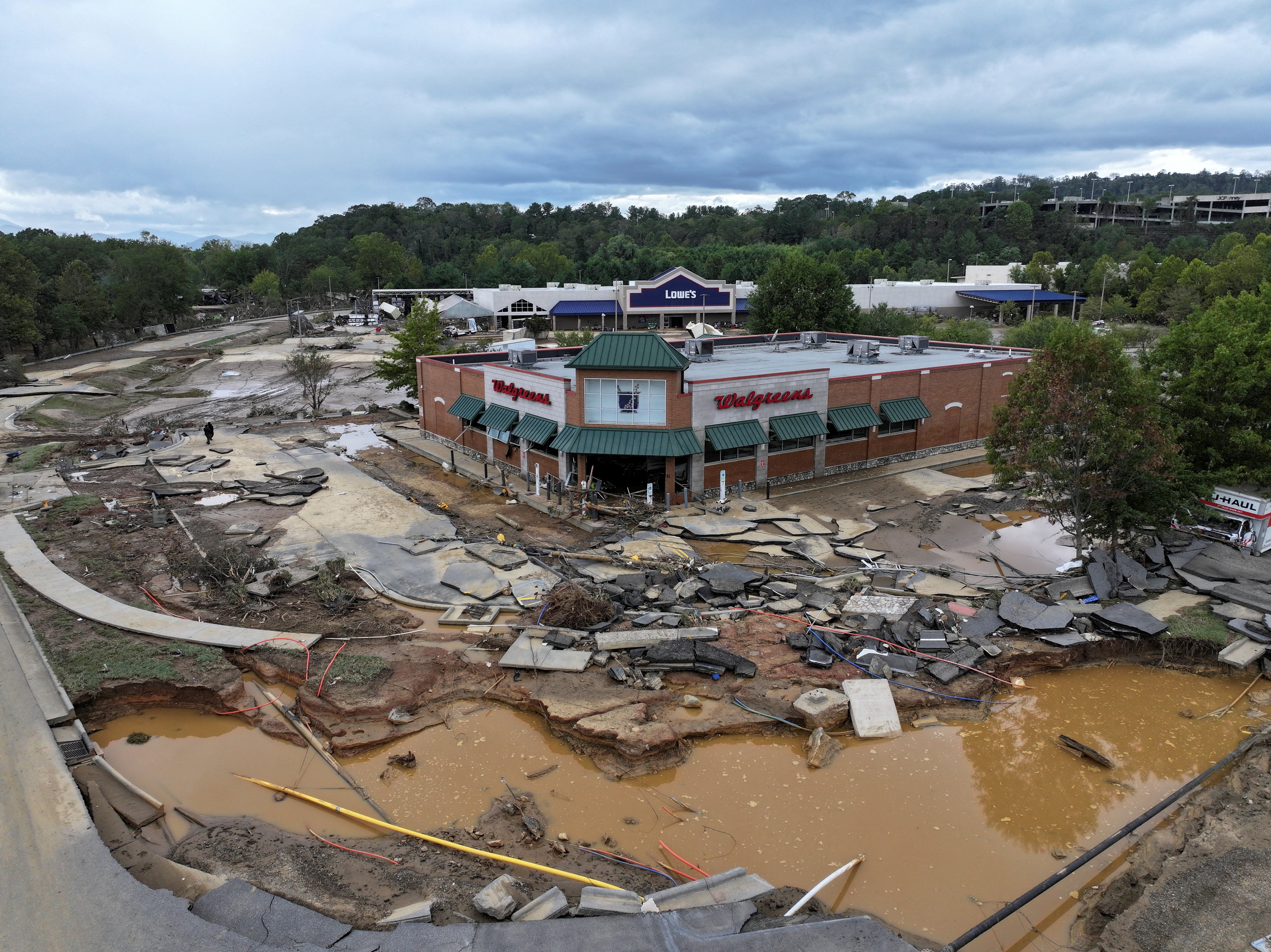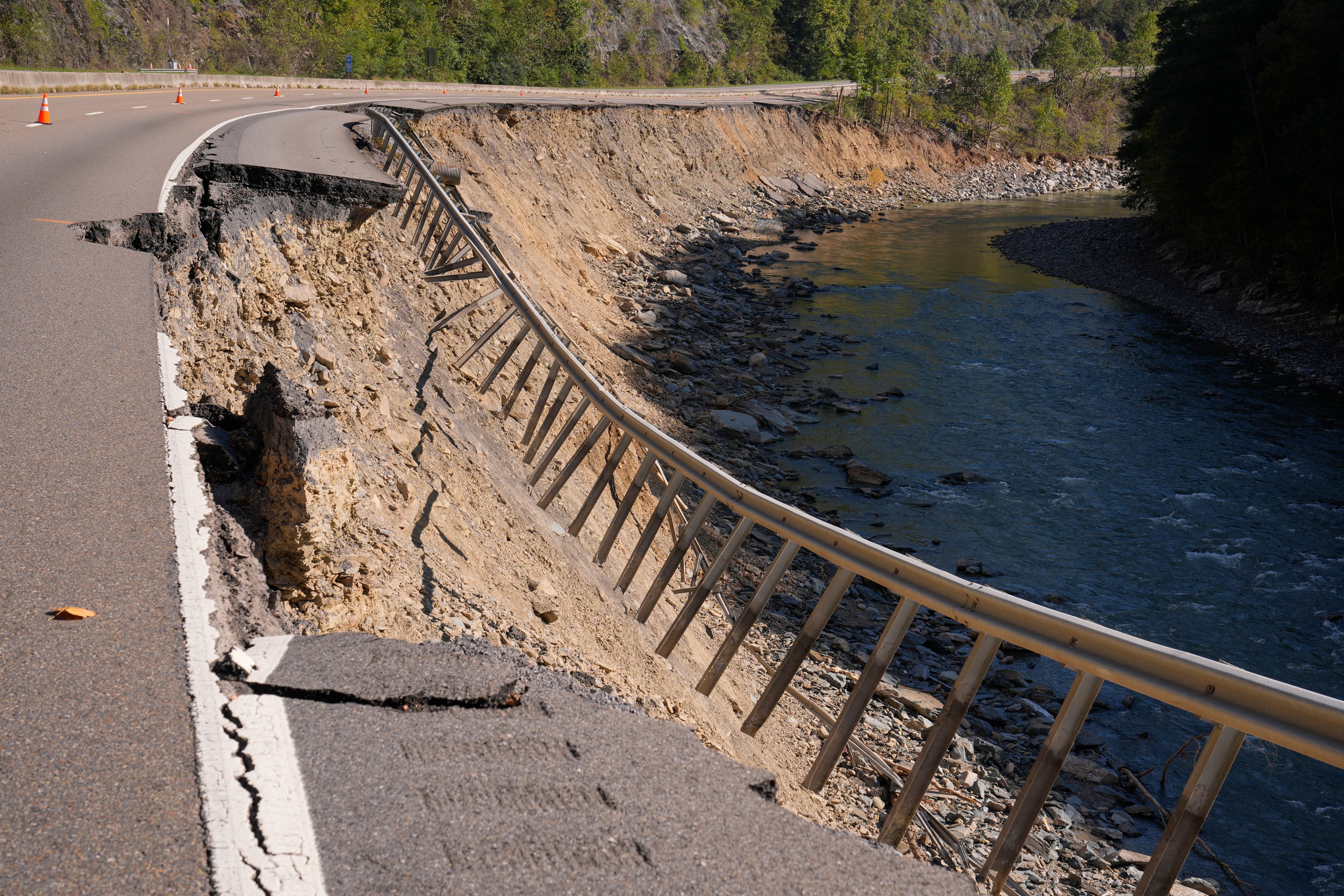Hurricanes ravaged the U.S. this year and caused $500 billion in damage and economic loss, experts say
A new report estimates total economic and damage loss from the Atlantic hurricane season at a shocking $500 billion
Hurricanes thrashed the US this year leading to more than 200 deaths and causing over $500 billion in damage and economic loss as communities faced flooding and destructive winds from the storms.
The nearly half-billion-dollar total makes the 2024 season one of the most costly on record, according to AccuWeather.
AccuWeather Founder Dr. Joel Myers said in a statement that the damage and suffering from hurricanes like these are often much greater than what is initially reported and what insurance typically covers.
“The long-term effects of weather disasters are harmful to longevity. People experience trauma, they lose their possessions, they end up with less money to rebuild, pay for health expenses, and eventually retire,” he explained.
Five hurricanes made landfall in the contiguous US this year, although the media forecasting company also included cost estimates for an unnamed storm along the Southeast coast in its report. The company’s experts believe the system should have been designated a subtropical storm.

This season ranks in the top five for the most hurricanes to develop and only three previous seasons since 1850 experienced more hurricane landfalls in a single year. Last year ranked fourth for named storms.
AccuWeather said Helene was responsible for about half of the $500 billion preliminary estimate, with a price tag of between $225 and $250 billion. Most of the damage was not insured.
The Tar Heel State saw the most deaths in the wake of Hurricane Helene, and the toll rose to 103 last week. The hurricane unleashed a stunning 42 trillion gallons of rain: the equivalent of the flow of Niagara Falls for nearly two years. Officials in the region said it would take many areas, like the heavily hit Buncombe County, years to recover from the hurricane.
Milton came in second, estimated at $160 to $180 billion dollars worth of damage and economic loss. Hurricane Beryl – the season’s first hurricane and the strongest July Atlantic hurricane on record – cost between $28 and $32 billion. Hurricane Debby, which also struck Florida’s Big Bend, placed fourth. Hurricane Francine and an unnamed storm with impacts in North Carolina both were estimated at below $10 billion.

Impacts from 2024 hurricanes disproportionately affected residents in rural and coastal communities, some of whom have remained in tents for weeks after the storms passed. North Carolinians in Asheville only got drinking water back last week and floodwaters from Hurricane Milton have remained an issue for Floridians a month after the storm made landfall.
“This has been a tremendously expensive and devastating hurricane season,” AccuWeather Chief Meteorologist Jon Porter said. “Coastal communities were devastated by wind and storm surge damage. Catastrophic flooding ripped apart mountain towns hundreds of miles away from the shore. Tornadoes damaged homes and businesses more than 1,000 miles away from where Hurricane Beryl made landfall.”
Notably, AccuWeather’s estimate of $500 billion equates to nearly 2 percent of the U.S. gross domestic product.
AccuWeather said other estimates of hurricane damage and economic loss don’t consider important factors in their estimates. Those factors include long-term medical costs, uninsured losses, job and wages losses, crop losses, infrastructure damage, business and supply chain disruptions, evacuation and relocation costs, long-term tourism impacts, travel delays and airport closures, and emergency management and government expenses.

“As far back as 2018, we have said that many hurricane damage estimates are far too low. They often only focus on insurance and what’s covered; that could be as little as 5 or 10 percent of the total economic loss, not to mention the impact of job losses and long-term health care costs,” Myers said. “Businesses fail, jobs are lost, people move away, houses are destroyed, and all of that is not covered by insurance. That money is gone forever, and it has a long-term effect on communities.”
As of November 1 of this year, there had been 24 confirmed weather and climate disaster events with losses exceeding $1 billion in the U.S., including four tropical cyclones and 17 severe storms.
All of those events resulted in the deaths of 418 people, according to the National Oceanic and Atmospheric Administration.
AccuWeather noted that a report from the International Chamber of Commerce suggests that extreme weather and impacts linked to climate change have cost the global economy more than $2 trillion in the last decade. Climate change is making hurricanes stronger and faster.
Join our commenting forum
Join thought-provoking conversations, follow other Independent readers and see their replies
Comments